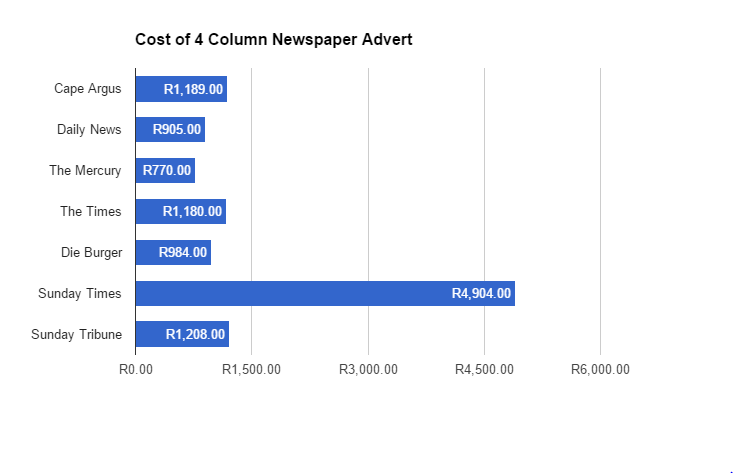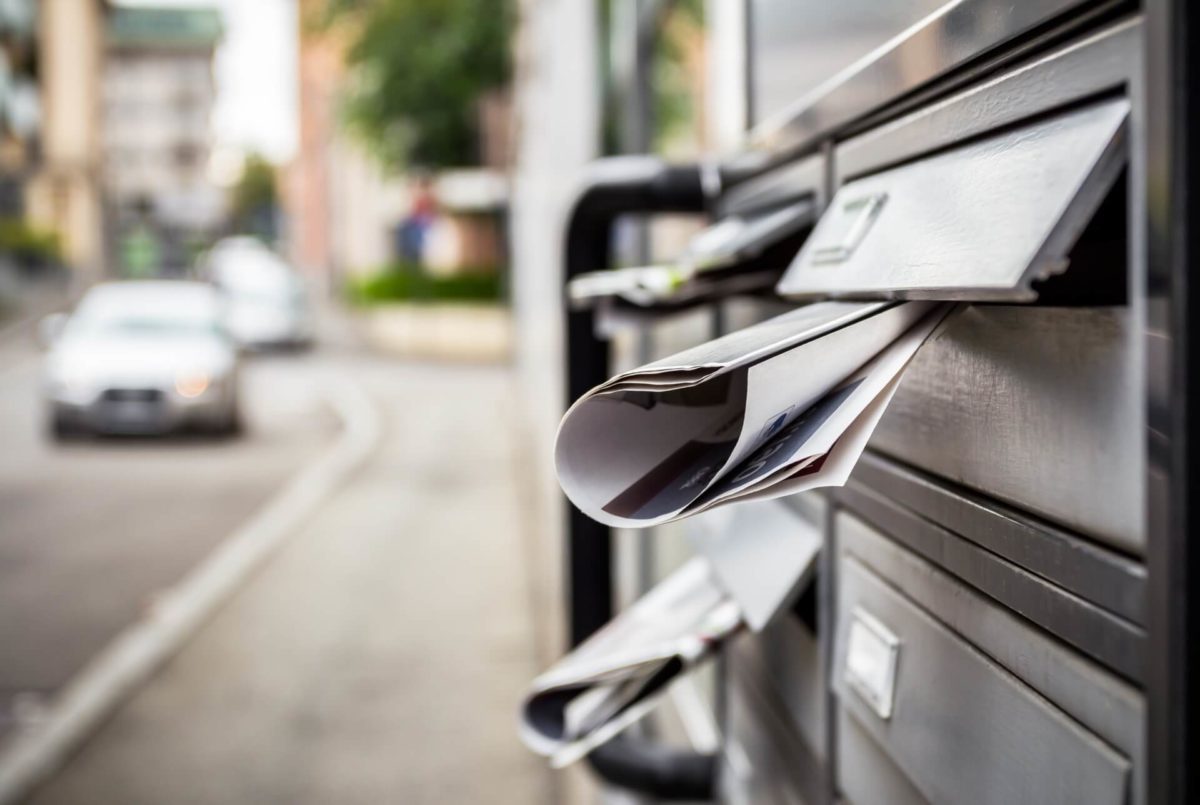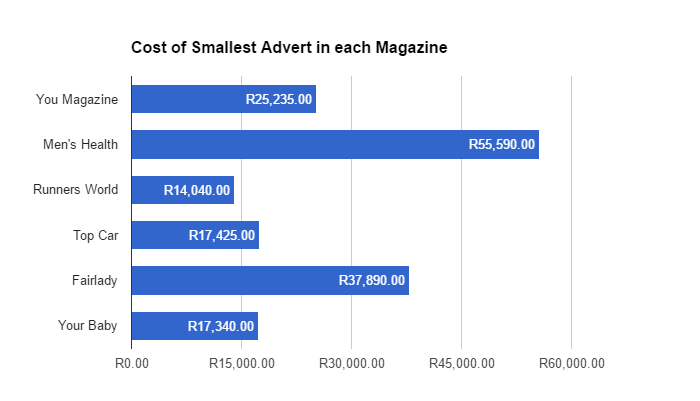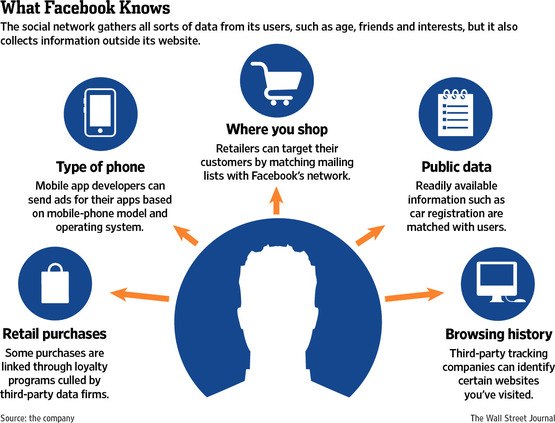The struggle business owners face is how we get the most “bang for our buck” from our monthly advertising spend. But with the internet having changed the way we do business, finding new customers is increasingly difficult for the more established businesses who have relied on traditional print advertising. As a result we get asked a lot about Facebook Advertising costs.
Thus we decided to investigate and compare it to traditional advertising mediums such as newspaper, magazines and flyer drops.
So what are the Facebook Advertising Costs versus print?
In my experience, advertising is too often seen as a luxury for many businesses, and many South African companies I’ve come across rely solely on “good service” and word of mouth to bring in their business.
This may have worked in the past, but the internet and buyer behaviour has significantly shifted towards using search engines (mostly on their phone) and social media. This allows buyers of all ages to quickly find what they are looking for or form an association with a brand due to their social media and content posting strategy.
People are increasingly hesitant to traditional forms of advertising that interrupts their attention – if they are even giving their attention to radio, TV or print media anymore!
Smart businesses now understand that they need to market their products or services with this new customer journey in mind.

Actual Buyer’s Journey Image: https://ahrefs.com
In light of this, I took it upon myself to do some research on the costs of traditional advertising versus Facebook.
I have delved into the rate cards of many forms of traditional advertising and come up with a comparative study of the options available to small and medium sized businesses.
I compiled my findings into this report on what you could do as an SME with a marketing budget of R 2 500, R 7 500 and R 15 000. You can see the summary of the results in the table below:
Print advertising
I started my search looking at traditional methods of advertising. I looked at advertising in a few national magazines, national and local newspapers, trade magazines and even printing flyers. Each of these methods bases their pricing models on two factors; circulation and readership.
Circulation refers to the actual number of copies printed. These figures are independently audited and I am confident that they are reported accurately. After all, these publications make their money off advertising and the higher their circulation the higher the advertising rates can be.
What the numbers don’t show however, is the number of copies not sold and returned. It’s all well and good to publish numbers of how many copies were made, but you need to factor in how many of these copies were actually bought by people who would see your advert. These numbers are a closely guarded secret for obvious reasons, but it does make you wonder how many copies are actually being seen by people.
Readership is where the numbers get really interesting. Readership is measured annually by the South African Audience Research Foundation (SAARF). They publish an annual report called the All media and Products Study (AMPS).
Readership data is based on the premise that more than one person will see or read a particular issue. We have all been to the doctor’s office and see there magazine collection, readership values assume that people will read other people’s copies of the magazine or newspaper.
This report is based on a questionnaire that is given to South African Adults from all walks of life. It surveys approximately 25 000 people and asks them about their reading habits. As far as I understand the procedure, respondents are asked whether or not they have seen or read a particular publication over a six month period. and based on their answers the readership numbers are calculated.
According to an article published by SAARF, “The measurement of readership is far from straightforward” and it’s statements like these that make me as a business owner concerned. For my money, that seems a little wishy washy.
The measurement of readership is far from straightforward – SAARF
So lets get into the print advertising data:
National Interest Magazines:
I looked at placing an advert into the following magazines: You, Men’s Health, Runner’s World, Top Car, Fairlady and Your Baby.
It became very clear early on in my research that advertising in magazines is designed for big business. There was not much that could be done with the marketing budgets of R 2 500, R 7 500 and R 15 000 that I was comparing. I did do a comparison of the cost to place the smallest possible advert in the main body of each magazine.
The prices range from R 14 000 to R 55 000 per issue of the magazine for the smallest possible advert. Many business owners are excluded from this medium and can’t compete with their bigger competitors because of these prices.
The best option for business owners wanting to get into these publications is to place inserts into the magazines. A single page insert will set you back R 505 per 1000, then you will need to have the advert designed (R 500) and the pages printed too (R 1400). By my calculations you could do the following with each of our specified budgets.
National and Local Newspapers:
For newspapers I had a look at some of the most widely read papers in the country. I looked at the Cape Argus, Daily News, The Mercury, The Times, Die Burger, Sunday Times and the Sunday Tribune.
When I first saw these rates I thought that they were actually quite reasonable. After further research, however, I realised that the prices quoted are for a single 3 cm column and per issue. So if you want to run an advert that stands out from the crowd you would need to have a minimum of 4 columns (12 cm).
The prices shown in the table below are for a 4 column advert in full colour in a standard position.

Trade Magazines:
Trade Magazines are very popular amongst small businesses, especially those in home improvement. I looked at The Grapevine magazine, a local trade magazine in Durban. When I was younger I worked as a salesman in a paving company and we advertised in this publication. I do recall it being very successful in terms of bringing in new leads, and so I can understand why it is a popular advertising option. So I was shocked to see how expensive it was to advertise in these magazines. The smallest possible ad (1/8 of a page) is R 2074,80 pm and the shortest contract available is a 3 month contract. To receive the same exposure as the other ads I have quoted above you would need to take a 1/2 page ad. This is a staggering R6 714,60 per issue and once again you have to take a 3 month contract. This R 20 000 over 3 months would need some very good results to justify the spend.
Flyers:
The last traditional option we will look at is printing flyers. This seems to be the go to advertising technique for many business owners. Almost every time I pull up to a robot I am approached by somebody wanting to give me a flyer, or when I fetch my mail from the post box there is always a pile of flyers that come with it.
The idea here is that people will see your brand and your offerings and hopefully be persuaded to buy something. It really is a shotgun approach to advertising, firing off thousands of flyers in the hope that you will catch something.
If you are honest with yourself, 99 times out of 100 that flyer, if you take it, ends up in the bin. Fortunately, it is relatively inexpensive. I looked at a great company called Flyerman. You can have 5 000 flyers printed for R 1 800. This bodes well for our marketing budgets and I think this is why this option is still so popular. Don’t forget though, that you will need some form of design work (R 500) and you will need to pay someone to distribute your flyers too.
The biggest consideration other than cost when it comes to advertising is attention. The purpose of advertising is to make people aware of our products and services. There are many mediums for us to do that on.
The question you need to ask yourself is where are people placing their attention the most. Are they reading magazines, or newspapers or are they paying attention to billboards or flyers. I can’t speak for everyone, but in my opinion the attention of the vast majority of the population is now focused on their mobile phone.
Instead of of paying to try and attract people’s attention away from where they are, we should focus our marketing efforts on finding them where they already are.
What About Facebook Advertising Costs?
Before we look at the Facebook advertising costs, I think it’s important to note why Facebook has proven to be such a powerful platform for advertisers.
When we sell a product or service it’s very important to know who our target market is. If we know who we are selling to we can tailor our advertisements to those types of people. Knowing your target audience is a surefire way to keep advertising costs to a minimum as you don’t have to use the shotgun approach to try and find your customers, you can target them directly.
Print advertising does this to some extent with something they call LSM standards. These standards measure the living standards of the people they survey and give an indication of their spending capacity and their demographics.
Companies that are looking for a specific sector of the market can use these standards to target their ads in the appropriate publications. So with high circulation, readership and segmentation it’s clear why many companies persist with print advertising.
The problem with print advertising…
The problem with LSM is that is that it isn’t very accurate. Sure they claim to be accurate, but compare their general understanding of their readership versus the depth of knowledge Facebook has on every user who uses the social media platform.
Facebook at the very least knows our age, location, device usage, work history and who we connect with on a regular basis. More importantly though they know our interests and likes.
How? We let them know every time we click on a page, read an article, watch a video or look at a picture. Their algorithm is one amazing engineering feat and it is only getting better.
How could print ever compete with this depth of information?
Simply put, it can’t.
In pricing terms print charges for their estimated reach and readership, whereas Facebook charges you for only those who actually see or click on your advert (according to your advert set up).
Say you want to reach a male audience in a specific location and only between the ages of 40 and 50 and who like a certain brand of beer… no problem on Facebook. If the audience is big enough and your advert is well designed as well as relevant, then you’ll get immediate results and you’ll only pay for the results you got. Compare that to print and you’ll soon realise where businesses should be spending their advertising spend.
With 16 Million of them being South Africans on Facebook, you immediately have access to these users at a fraction of the cost of print and at the same time you start getting a very clear picture of who is actually interested in your company.
There is no guess work, only facts and statistics and the best part? The more you advertise the smarter Facebook gets when serving up your adverts. It is in Facebook’s interest to get you results otherwise you’ll stop using them! So they work incredibly hard at making sure your adverts are seen by those who are the most likely to click on it – but you’ll have to set it up correctly or else no amount of Facebook smarts will help you.
So what is the cost of a Facebook Advert?
This is a very common question and it is not one that can be answered definitively as it does depend on a lot of factors.
Facebook Advertising Costs are determined by:
- Your target audience
- Your bidding plan
- Your advert relevancy score (Comments, shares, likes)
- Your landing page quality score (Content quality, conversion rate, speed of load)
There are averages and trends available to try give an idea of how much an average Facebook Advert costs but it won’t be able to tell you exactly how much your specific campaign is going to cost.
It is important to understand that Facebook Adverts work like an auction, similar to that of Google Adverts, thus there is no definitive answer to the question “how much do Facebook Adverts cost?”
However from past campaigns most of the successful one’s we have seen reach around 15 000+ unique people and get more than 1000 clicks for a cost per click of around R1 using video adverts and canvas ads as the primary ad layout and destination.
Similarly carousel adverts have a high engagement rate which also lowers the cost significantly.
When compared to the cheapest form of print advertising, flyer distribution (R2500 for 5000 flyers), R1000 on Facebook reaches 10 000 more people and receives 1000 actionable clicks (shows real interest).
The best part of using Facebook is that the people who clicked on the ad can be targeted again with another advert using the custom audiences feature. As these people have expressed interest in your advert, you can even create a bigger audience using the Facebook algorithm which actively looks to find similar people who might also be interested!
Try doing that with a flyer or newspaper ad. Try find those people who saw your trade magazine ad and send them another one straight away giving them a discount or incentive.
The comparison is stark. One medium is cheaper, more effective, personalised and provides accurate data. The other is using tactics from before the internet changed everything.
For a more complete breakdown of Facebook Advertising costs visit the Ad espresso’s blog on the topic to see their complete breakdown of ad costs across various countries.
Conclusion:
Although print has a place, and we’re not saying print is dead – that is not the case at all, we are saying that print advertising costs far more for inaccurate readership and distribution when compared to Facebook Advertising.
As a small to medium sized business you cannot afford to spend money on advertising but get little to no return, and for many businesses this is unfortunately the case.
Business owners must move with the times and be aware of the benefits of both offline and online advertising. There are distinct reasons for being on either, but using print advertising as your only strategy because that is all you have ever done is a surefire way to allow your competitors to take the potential online business away from you.
If you are unsure that Facebook Advertising would benefit your business book some time with us and we’ll discuss your business needs and look at what potential opportunities exist online – we have the data and user information to do this, all you have to do is ask us.
What are your thoughts on running Facebook Advertising vs print campaigns? Have you seen a diminishing return on print advertising or have you seen no change at all?







